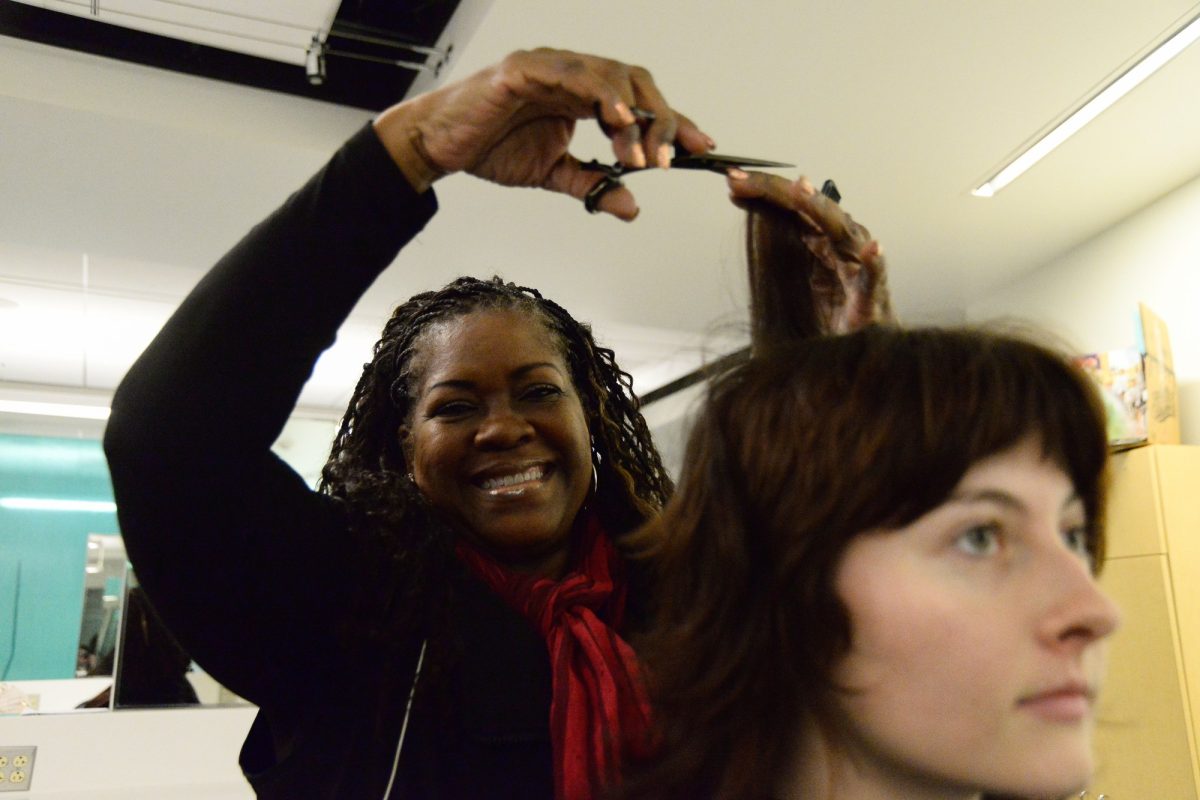It’s not just a portable device to make phone calls anymore.
It’s hard to walk on campus without seeing people everywhere with cell phones pressed to their ears or earpieces plugged in, chatting away.
From text messages to cameras, blinking lights to hanging accessories, cell phones are no longer just a piece of equipment used for communication.
“It’s just more distraction. A phone is a phone, that should be all it’s used for,” Jay Canela, nursing major, said.
That “distraction” seems to be the very thing people cannot get enough of.
About three years ago, it was the Nokia phone. People everywhere had them and the hip thing to do was to put blinking lights in the body of the phone to make it light up whenever there was an incoming call.
“I thought it was so cool,” Angela Cadwell, biology major said. “Now that I think about it, it was so annoying to have that thing light up like crazy while I’m on the phone.”
Other than phone covers, lights and decorations on the body of the phone, ring tones, graphics and games are also great sources of revenue for phone service providers.
Nokia just announced the new distribution and transaction service last week, Preminet, which is similar to Qualcomm’s BREW, a “one-stop shop” for wireless operators who want to sell ring tones, games, picture messaging and other cell phone paraphernalia, according to CNET.com.
Just search for ring tones on Google.com and hundreds of sites will pop up for rings tones and graphics for download, both for free and for a price ranging from pennies to a few dollars per ring tone or graphic.
As far as actual working capabilities are concerned, cell phones are now equipped with text messages, Internet capability and cameras where pictures can be taken and sent to e-mail or other cell phones.
Since the boom of text messages about four years ago, the latest craze in cell phones is the camera phone.
“College students come in and ask for the camera phone all the time,” Mike Burke, sales representative at a Manhattan Beach AT&T Wireless store, said. “Most of the phones are equipped with a camera now.”
Ever since the emergence of built-in cameras in cell phones about two years ago, popularity has been gaining speed.
“It’s useful because people can use it for work,” Burke said. “I know people who work on constructions, they can take a picture and send it to work right away.”
Burke anticipates that the next wave of cell phones will be streaming videos.
“Currently, there are already the newest phones where you can watch a 30-second video clip,” Burke said.
In more electronically advanced countries such as Japan, some phones are equipped with microchip-laden “smart cards,” where people can make electronic payments like a debit card, according to CNN.com.
All the person has to do is wave the phone in front of a special display and an instantaneous payment will be made through the phone, the news report said.
In West London, people are renting bicycles with their cell phones. A pin number is issued to unlock the bicycle while another pin is issued to return it, according to BBC Online.
Back in America, people are still discovering the potentials of camera phones. Since they were first introduced to the public, the advancement of technology had helped to lower the prices of the phones. People are trading in their obsolete cell phones for the new, sleekly packaged phones with a camera.
Some issues about cheating in class with camera phones have arisen, but haven’t caused much of a stir among professors.
“I’ve heard that students can cheat by taking pictures of tests,” Elizabeth Shadish, philosophy professor said. “I’m not too worried about it, though, if a student has a phone out during a test, obviously, I’d just tell them to put it away.”
What the cell phone itself can do is not a concern, but what it does to people and society as a whole is the concern for some.
Cell phones have the ironic tendency of fostering the paradox of both bringing people together and isolating individuals.
“People are becoming so preoccupied with cell phones now that it’s hard to have face-to-face conversations. Everywhere you go people are talking on cell phones, but they’re not even talking about anything,” Maria Brown, history and women studies professor, said.
Of course, the original purposes of cell phones have not been lost.
“It brings people closer together,” Shadish said. “I got my daughter a cell phone when she started to drive on the 405 freeway because I wanted a way to get a hold of her anytime and so she can find me, too.”
Cell phones have become a quintessential of social life. They are no longer just portable phone lines, but are pieces of trends and social commodities.
“I can’t go anywhere without it,” Cadwell said about her cell phone. “If I forget it at home, I have to turn around to get it.”








